
A carbine is a long gun that has a barrel shortened from its original length. Most modern carbines are rifles that are compact versions of a longer rifle or are rifles chambered for less powerful cartridges.
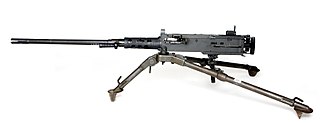
The M2 machine gun or Browning .50 caliber machine gun is a heavy machine gun that was designed near the end of World War I by John Browning. While similar to Browning's M1919 Browning machine gun, which was chambered for the .30-06 cartridge, the M2 uses Browning's larger and more powerful .50 BMG cartridge. The design has had many designations; the official U.S. military designation for the infantry type is Browning Machine Gun, Cal. .50, M2, HB, Flexible. It has been used against infantry, light armored vehicles, watercraft, light fortifications, and low-flying aircraft.

The .50 BMG, also known as 12.7×99mm NATO, and designated as the 50 Browning by the C.I.P., is a .50 in (12.7 mm) caliber cartridge developed for the M2 Browning heavy machine gun in the late 1910s, entering official service in 1921. Under STANAG 4383, it is a standard service cartridge for NATO forces, as well as many non-NATO countries. The cartridge itself has been made in many variants: multiple generations of regular ball, tracer, armor-piercing (AP), incendiary, and saboted sub-caliber rounds. The rounds intended for machine guns are made into a continuous ammunition belt using metallic links.

The M240 machine gun, officially the Machine Gun, 7.62 mm, M240, is the U.S. military designation for the FN MAG, a family of belt-fed, gas-operated medium machine guns that chamber the 7.62×51mm NATO cartridge.
The Special Purpose Individual Weapon (SPIW) was a long-running United States Army program to develop, in part, a flechette-firing "rifle", though other concepts were also involved. The concepts continued to be tested under the Future Rifle Program and again in the 1980s under the Advanced Combat Rifle program, but neither program resulted in a system useful enough to warrant replacing the M16.

The Barrett M82 is a recoil-operated, semi-automatic anti-materiel rifle developed by the American company Barrett Firearms Manufacturing.

A heavy machine gun (HMG) is significantly larger than light, medium or general-purpose machine guns. HMGs are typically too heavy to be man-portable and require mounting onto a weapons platform to be operably stable or tactically mobile, have more formidable firepower, and generally require a team of personnel for operation and maintenance.
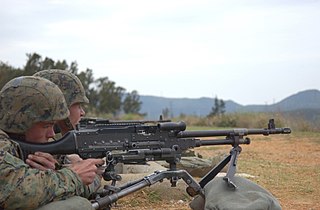
A medium machine gun (MMG), in modern terms, usually refers to a belt-fed machine gun firing a full-powered rifle cartridge, and is considered "medium" in weight. Medium machine guns are light enough to be infantry-portable, but still cumbersome enough to require a crew for optimal operational efficiency.

The XM307 Advanced Crew Served Weapon (ACSW) was a developmental 25 mm belt-fed automatic grenade launcher with programmable airburst capability. It is the result of the OCSW or Objective Crew Served Weapon project. It is lightweight and designed to be two-man portable, as well as vehicle mounted. The XM307 can kill or suppress enemy combatants out to 2,000 meters (2,187 yd), and destroy lightly armored vehicles, watercraft, and helicopters at 1,000 meters (1,094 yd). The project was canceled in 2007.
The XM312 is a heavy machine gun derived from the XM307 25 mm autocannon and chambered for the .50 BMG cartridge. It was designed in response to a request by the U.S. military for a replacement for the aging M2 Browning heavy machine gun, and as a complement to the heavier XM307 Advanced Crew Served Weapon grenade launcher.

The Kord-12.7 mm heavy machine gun is a Russian design that entered service in 1998 replacing the older NSV machine gun. Externally the weapon resembles the NSV; however, the internal mechanism has been extensively reworked, changing from a horizontally pivoting breech block to a rotating bolt design. Additionally the gas system has been changed and the muzzle baffle redesigned. These changes give the weapon reduced recoil compared with the NSV, allowing greater accuracy during sustained fire.
Ares Incorporated is an American weapons manufacturer and firearms engineering company co-founded by the American weapons inventor and developer Eugene Stoner in 1971. The company is based in Port Clinton, Ohio, and produces fire control systems, turret systems, small arms, automatic cannons and industrial machinery. Mr. Stoner left the company in 1989, joining Knight's Armament Company in 1990, where his designs included the Stoner 96, a further refinement of the Ares LMG/Stoner 63.
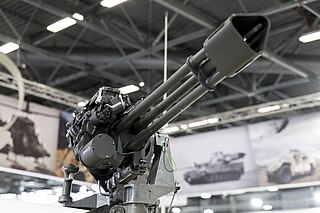
The GAU-19/A is an electrically driven, three-barrel rotary heavy machine gun that fires the .50 BMG cartridge.
The Lightweight Small Arms Technologies (LSAT) program is funded by the U.S. Joint Service Small Arms Program, with the goal of significantly reducing the weight of small arms and their ammunition. Following a series of military programs to investigate advances in small arms, the LSAT program is the US military's latest project to replace existing US small arms. Tactical concepts and the research from the previous small arms programs indicates that lightening small arms is the first significant step towards increasing soldiers' lethality and survivability.

The LSAT light machine gun is a component of the Lightweight Small Arms Technologies (LSAT) program. The purpose of the program was to develop a lighter, yet highly reliable light machine gun (LMG). The program was initiated in 2004, when the Joint Service Small Arms Program (JSSAP) challenged the American defence industry to develop a lighter small arms and also design lighter ammunition.

The M249 SAW, formally the Light Machine Gun, 5.56 mm, M249, is the United States Armed Forces adaptation of the Belgian FN Minimi, a light machine gun manufactured by FN Herstal (FN).

The M205 Lightweight Tripod for Heavy Machine Guns is the replacement for the current M3 tripod in support of the M2 machine gun and Mk 19 grenade launcher used in the United States armed forces. The soldier will experience less weight burden with the M205 Lightweight Tripod than with the standard M3 Tripod, and will be able to take advantage of the enhanced tripod's integrated traverse and elevation mechanism for quicker, more accurate target engagement.
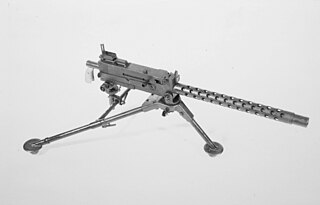
The M1919 Browning is a .30 caliber medium machine gun that was widely used during the 20th century, especially during World War II, the Korean War, and the Vietnam War. The M1919 saw service as a light infantry, coaxial, mounted, aircraft, and anti-aircraft machine gun by the U.S and many other countries.
The True Velocity RM338, formerly Lightweight Medium Machine Gun (LWMMG), is a prototype machine gun being developed first by General Dynamics, later by LoneStar Future Weapons, now by True Velocity. The weapon was originally developed by General Dynamics for Combating Terrorism Technical Support Office (CTTSO) Irregular Warfare program, but was later reintroduced by True Velocity for United States Special Operations Command (SOCOM) LMG-M program.
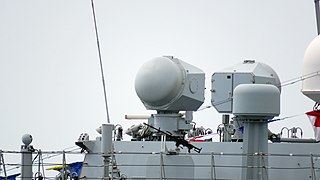
The QJZ-89, also known as the Type 89 heavy machine gun, is a heavy machine gun designed in the People's Republic of China which fires the Soviet 12.7×108mm ammunition.
















